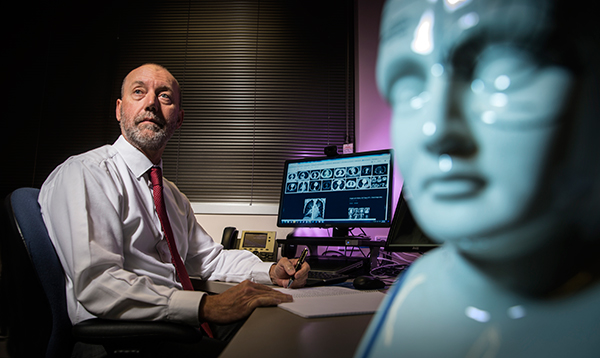April 28, 2015
Telehealth paves the way for a new way of medical learning
A two-year Telehealth training program expands clinical learning opportunities for medical students.

A two-year Telehealth training program – involving broadband enabled medical consultations – has exceeded all target expectations and is being touted as an effective model for expanding clinical learning opportunities for medical students.
UOW’s Graduate School of Medicine in 2012 won a Federal Government (Department of Education and Training) grant (now valued at $880,000) to develop the program which has two main components:
· ‘Four in the room’ telehealth medical education which involves creating clinical experiences for medical students through participation in Telehealth consultations between patients, their GP and specialist consultants; and
· Virtual clinics which involves internet streaming of recorded mock consultations between patients and doctors, and online interactive expert panel discussion with students – wherever the students are located
Professor Andrew Bonney, who holds the Roberta Williams Chair of General Practice at UOW’s Graduate School of Medicine and the Telehealth program leader, said the program had definitely proven its worth as a new way of learning. Training in Telehealth involves all employees involved in the medical practice and not just the doctors.
Professor Bonney said the graduate medical program at UOW had been designed to train medical practitioners with the capabilities and motivation to practise in rural Australia, either as GPs or specialists.
“A key skill set for these future doctors will be the ability to engage in and deliver high quality Telehealth – whether they choose to practise in rural and remote communities or not,” Professor Bonney said.
He said the project has had a particular focus on mental health, aged care, dermatology (including skin cancers) and ophthalmology.
“We are now at the point of developing a scalable and sustainable model of Telehealth training and implementation that will be able to be rolled out across large geographical areas to improve the quality of healthcare in regional, rural and remote areas.”
Doctors and medical students have been glowing in their praise for the Telehealth program. A UOW medical student at a rural site said: “Having that access to a consultant is great . . . often you might have seen that same patient with the GP. So to see the difference in how they approach the same condition from the GP to the consultant was nice to see as well.”
In this regard, GPs have been commenting that they too have benefited from having the patient, medical student and the consultant specialist all in the ‘room’ together.
As one rural GP put it: “We almost never get the opportunity to sit in when a patient goes to see the specialist so it’s a unique situation of being able to do that. One of our greatest educational tools as a GP, and particularly in the past, was specialist letters but better still to actually be there.”
Telehealth is a consortium project also involving the University of New England, Newcastle University, Notre Dame University and Deakin University.
Media contact: For further information contact Professor Andrew Bonney on +61 2 4221 5819 or Bernie Goldie on + 61 2 4221 5942.


